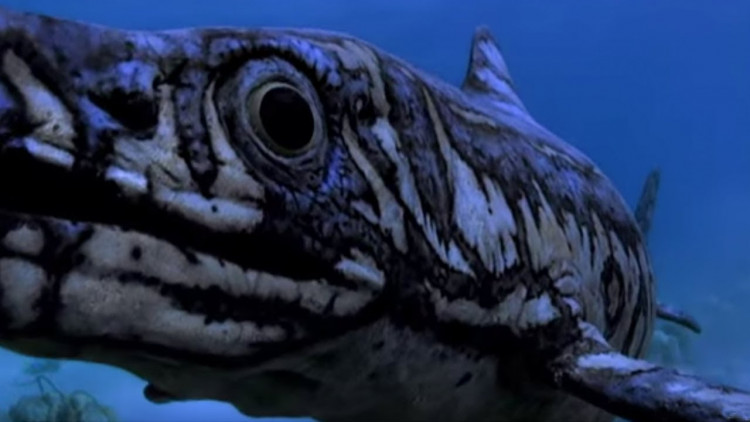Fossils of some of the biggest creatures ever to swim the Earth's oceans- whale-sized marine reptiles known as ichthyosaurs have been unearthed in an unexpected location: just above three mountains in the Swiss Alps rising to 2,740 meters above sea level.
Such "fish lizards" first existed in the ocean approximately 250 million years ago, with extended bodies and small heads, similar to dolphins. They appeared after the Permian extinction, which wiped away over 95% of marine species.
Scientists described rib and vertebrae fossils from two ichthyosaur individuals on Thursday (Apr. 28): one about 21 meters long and the other about 15 meters long. They described the largest-known ichthyosaur tooth from a third individual, with a base 6 centimeters wide and an estimated length of 15 centimeters, indicating a fearsome predator.
"The tooth is particularly interesting because it may represent the largest animal to ever inhabit Earth," University of Bonn paleontologist Martin Sander, lead author of the study published in the Journal of Vertebrate Paleontology, said. "We believe the big ichthyosaurs followed schools of fish into the lagoon, but the fossils could also be from stray animals that died there."
Those rock layers were the floor of a large lagoon about 200 million years ago. However, the Alps' folding, which began 95 million years ago when the African tectonic plate began to push up against the European tectonic plate, created piles of rock layers around 30 to 40 million years ago.
The fossils were apparently "tectonically deformed," squished by tectonic plate movements that forced them to a mountaintop rock formation.
Although ichthyosaur fossils have been discovered all over the planet, gigantic species' remains have been concentrated in North America. The discovery of these fossils in modern-day Switzerland broadens their distribution.
Previous data suggests that some of them could grow to be the size of blue whales, the world's largest animals.
The remains are too insufficient to determine their species, but they are most likely members of the ichthyosaur family Shastasauridae. This family includes Shastasaurus, the largest known ichthyosaur, with a specimen from Canada measuring 21 meters in length.
Even though these creatures once dominated the seas, fossils are scarce, leaving paleontologists in the dark. However, the ichthyosaur remains have shed new light on these enigmatic, extinct creatures.
Researchers wondered if any more massive aquatic animals were lurking beneath the ice.
However, these fossils contribute to filling a knowledge gap about large marine lizards.






